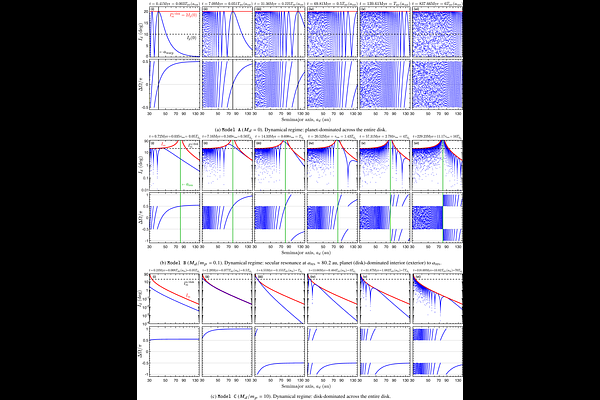The vertical structure of debris discs and the role of disc gravity

The vertical structure of debris discs and the role of disc gravity
Antranik A. Sefilian, Kaitlin M. Kratter, Mark C. Wyatt, Cristobal Petrovich, Philippe Thébault, Renu Malhotra, Virginie Faramaz-Gorka
AbstractDebris discs provide valuable insights into the formation and evolution of exoplanetary systems. Their structures are commonly attributed to planetary perturbations, serving as probes of as-yet-undetected planets. However, most studies of planet-debris disc interactions ignore the disc's gravity, treating it as a collection of massless planetesimals. Here, using an analytical model, we investigate how the vertical structure of a back-reacting debris disc responds to secular perturbations from an inner, inclined planet. Considering the disc's axisymmetric potential, we identify two dynamical regimes: planet-dominated and disc-dominated, which may coexist, separated by a secular-inclination resonance. In the planet-dominated regime ($M_d/m_p\ll1$), we recover the classical result: a transient warp propagates outward until the disc settles into a box-like structure centered around the planetary orbit's initial inclination $I_p(0)$, with a distance-independent aspect ratio $\mathcal{H}(R)\approx I_p(0)$. In contrast, in the disc-dominated regime ($M_d/m_p\gtrsim1$), the disc exhibits dynamical rigidity, remaining thin and misaligned, with significantly suppressed inclinations and a sharply declining aspect ratio, $\mathcal{H}(R)\propto I_p(0)R^{-7/2}$. In the intermediate regime ($M_d/m_p\lesssim1$), the system exhibits a secular-inclination resonance, leading to long-lived, warp-like structures and a bimodal inclination distribution, containing both dynamically hot and cold populations. We provide analytic formulae describing these effects as a function of system parameters. We also find that the vertical density profile is intrinsically non-Gaussian and recommend fitting observations with non-zero slopes of $\mathcal{H}(R)$. Our results may be used to infer planetary parameters and debris disc masses based on observed warps and scale heights, as demonstrated for HD110058 and $\beta$ Pic.